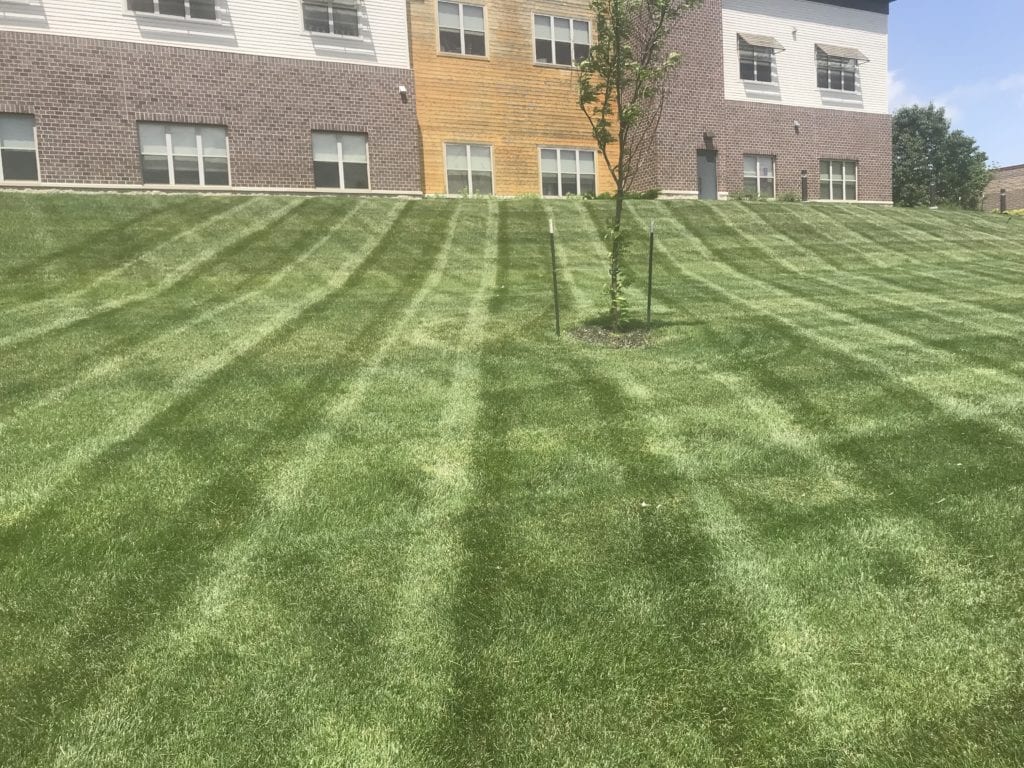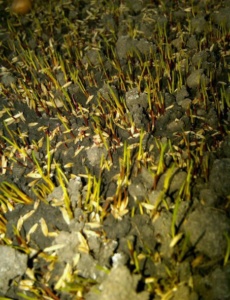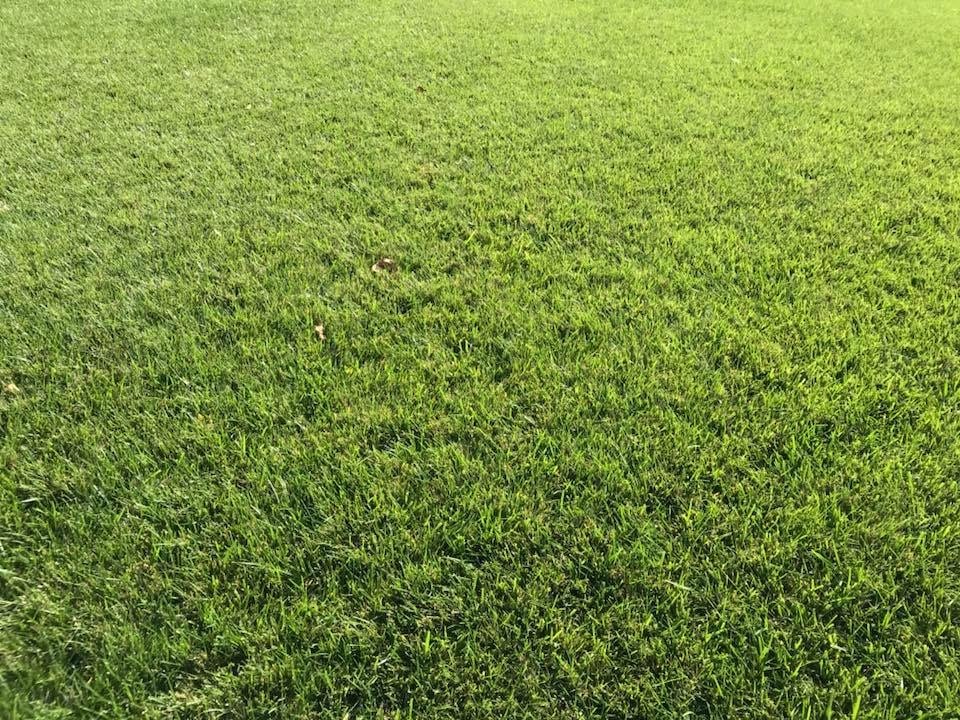How To – Lawn Renovation via Aeration & Verticutting

Lawn renovation is the goal. Aerate or verticut is the question. Knowing and understanding the benefit of each action is key to a successful lawn renovation. If the Summer looks to have taken its toll your lawn, or maybe it was kids or pets. Regardless of the cause, the lawn looks rough and you’re probably wondering what steps to take to get it back in shape. In the post below, we provide information on the differences between the different methods of lawn restoration. Continue reading below to clarify these actions by: how they are done, why they are done and what do they cost.
Lawn Renovation – Aeration
Imagine your lawn is like a big green carpet made of millions of grass plants. Beneath this carpet, there’s soil where the roots of these plants live and grow. For these roots to be healthy, they need to breathe, just like how we need air. Over time, the soil can become packed down and hard, almost like it’s squishing together too tightly. When this happens, it’s tough for air, water, and nutrients to get through the soil to the roots.
Lawn aeration is like giving the soil a bit of a massage to loosen it up. During aeration, small plugs or cores of soil are removed from the lawn using a special machine called an aerator. This process creates little holes throughout the lawn.
Benefits of Lawn Aeration:
Breathing Room:
By removing these small plugs of soil, air can easily reach the grass roots. It’s like opening windows in a stuffy room!
Thirst Quencher:
The holes also allow water to penetrate deeper into the soil, ensuring the grass roots get a good drink.
Nutrient Boost:
With the soil loosened up, fertilizers can reach the roots more effectively. This provides the grass with essential nutrients to grow strong and healthy.
Root Growth:
Because of all the good stuff the roots are getting (air, water, nutrients), they can grow deeper and thicker, making the grass healthier overall.
Disease Prevention:
Compact soil can lead to waterlogging, which can, in turn, lead to diseases in the lawn. Aeration helps in preventing this by improving drainage.
Thatch Breakdown:
Thatch is a layer of dead grass and roots on top of the soil. A little thatch is okay, but too much can block water and nutrients. Aeration helps break down thatch, allowing the lawn to breathe better.
In short, lawn aeration is like giving your lawn a spa day. It helps it breathe, drink, and absorb nutrients better, ensuring it stays green and healthy!
While lawn aeration has many benefits, there can be some negative effects if it’s not done correctly or at the right time.
Negative Effects of Lawn Aeration:
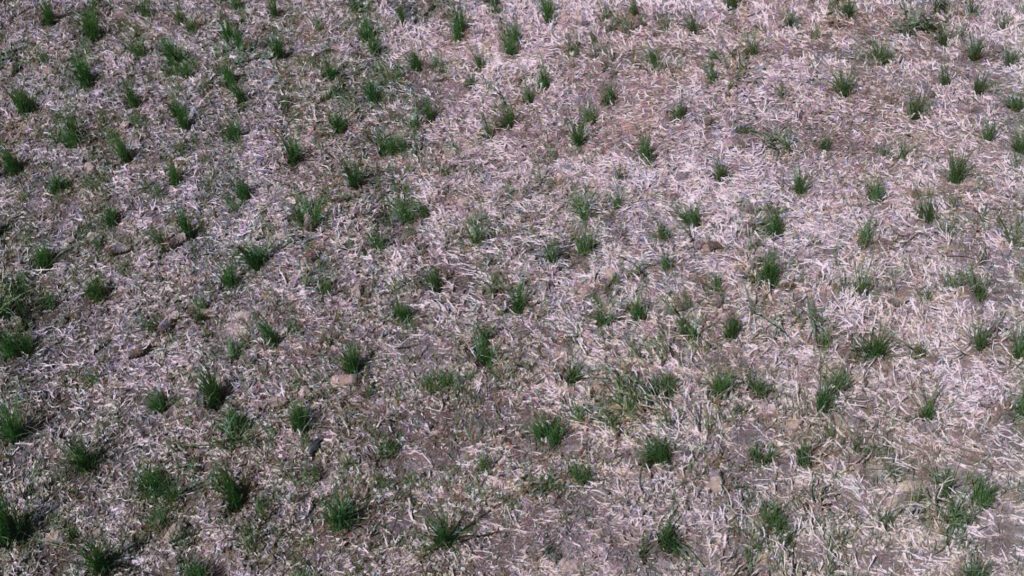
Timing Issues:
If you aerate at the wrong time of year, especially when weeds are growing aggressively, those weed seeds can settle into the holes and grow faster. This could mean more weeds in your lawn.
Stress on Grass:
Aeration is somewhat stressful for the lawn. If done too frequently or during periods of high heat or drought, it can weaken the grass, making it more vulnerable to diseases or pests.
Surface Disruption:
The plugs or cores pulled out during aeration can be unsightly, creating a messy appearance. While they usually break down with time and can benefit the soil, some people might not like how it looks initially.
Possible Root Damage:
If done too deeply or aggressively, aeration can damage grass roots, slowing their growth and potentially weakening the lawn.
Overseeding Complications:
People often overseed after aeration. If not done right, this can lead to uneven grass growth, with some areas becoming too thick and others remaining thin.
Cost and Effort:
Regular aeration requires equipment, either rented or purchased. It also takes time and energy. For some, the effort and cost might not yield the desired benefits, especially if other lawn care practices aren’t followed.
In summary, while lawn aeration can be great for helping grass roots breathe and access nutrients, it’s essential to do it correctly. Like many things, timing and method matter. If not done right, it can lead to a few unwanted problems for your lawn. An important consideration is that aeration is NOT the best way to overseed. For overseeding, you want to verticut.
Lawn Renovation – Verticutting:
First, let’s understand “verticutting.” Think of your lawn as having a hairdo. Over time, it can get tangled and messy, making it hard for anything to get through to the scalp. Similarly, your lawn can have a layer of dead grass, roots, and debris called “thatch.” If this layer becomes too thick, it acts like a barrier, blocking water, air, and nutrients from reaching the soil and grass roots below.
Verticutting, also known as vertical mowing or dethatching, is a process where a machine with vertical blades slices through the lawn and thatch layer. These blades cut into the soil slightly, breaking up the thatch and creating thin channels or slits in the ground.
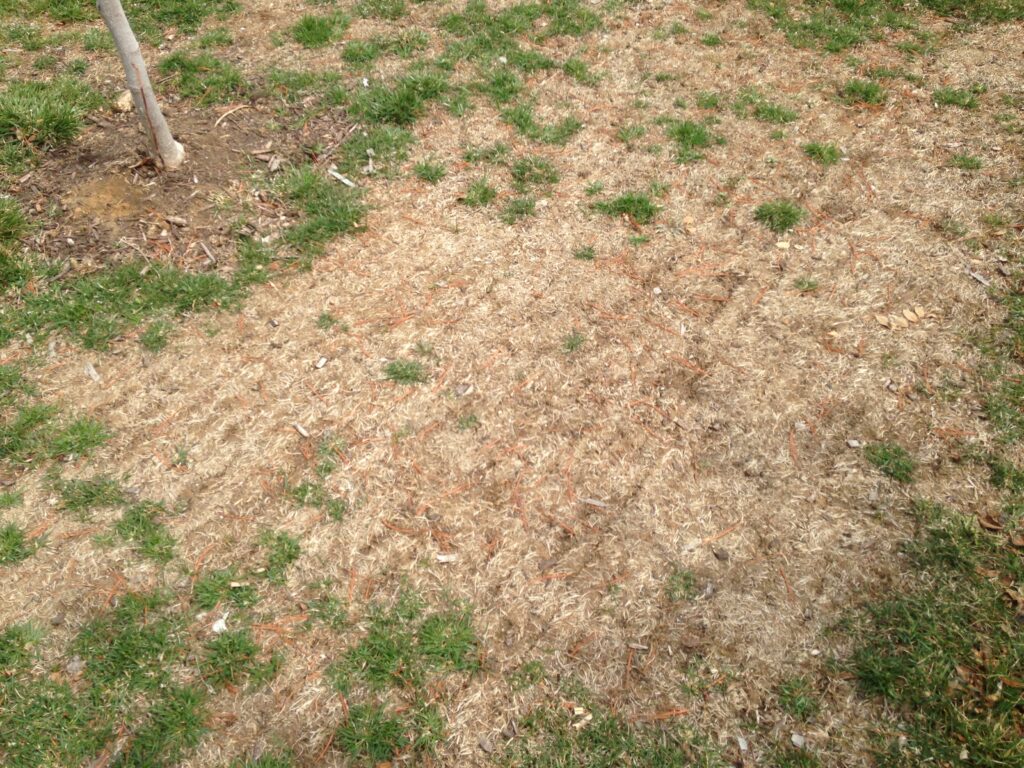
Benefits of Verticutting:
Breaking Barriers:
By slicing through the thatch, it allows water, air, and nutrients to easily reach the grass roots.
Encouraging Growth:
By creating slits in the soil, it can encourage the grass to grow thicker and healthier.
Lawn Renovation – Overseeding:
After verticutting, the lawn looks a bit rough since it’s been sliced up. This is where “overseeding” comes into play. Think of overseeding as sprinkling new seeds over the existing lawn, almost like adding fresh sprinkles to a cake. By doing this, we’re introducing new grass to fill in any bare or thin spots.
Benefits of Overseeding:
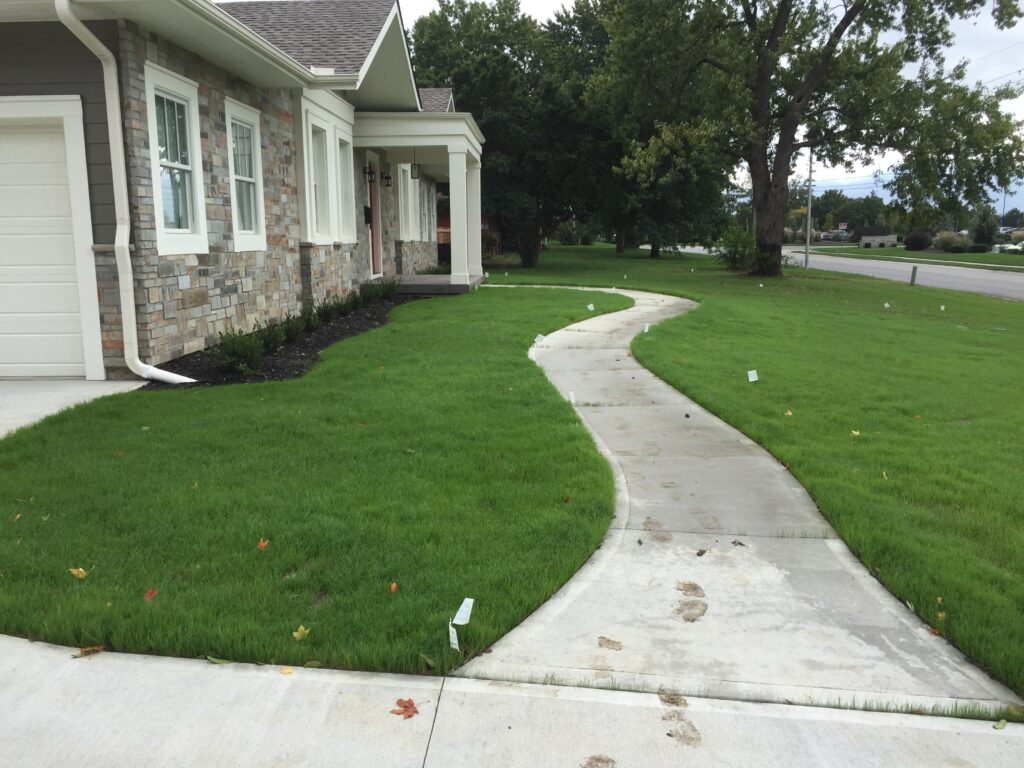
Fuller Lawn:
Adding new seeds helps the lawn become denser, which means fewer spots for weeds to grow.
Vibrant Look:
Freshly grown grass from the new seeds can make your lawn look greener and more vibrant.
Improved Health:
The new grass varieties introduced can be more resistant to diseases, pests, and drought.
In combination, verticutting and overseeding revitalize your lawn for a successful lawn renovation. It’s like giving your lawn a makeover, removing the old, tangled mess and adding fresh, new life to it!

